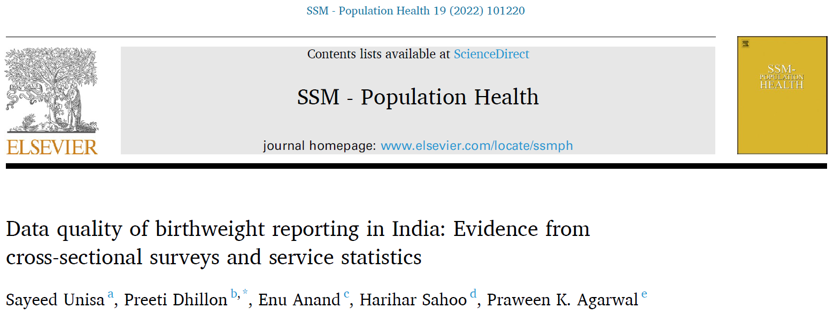Data quality of birthweight reporting in India: Evidence from cross sectional surveys and service statistics

The study aims to assess the quality of birthweight data collected in two surveys, including the National Family Health Survey (NFHS) and the Comprehensive National Nutrition Survey (CNNS), and as reported in the statistics from the Health Management Information System (HMIS). The study also aims to assess the implications of the data on the estimates of low birthweight (LBW). The percentage of newborns whose birthweight is missing continues to be high in the recent surveys (NFHS-4: 22%, CNNS: 30%) despite an improvement from 66% in NFHS-3. The under-coverage of birthweight data in HMIS is around 40%. In the surveys, the percentage of missing data on birthweight is higher among newborns belonging to poor households, Scheduled Tribes, and Scheduled Castes. Irrespective of whether birthweights are reported from the health cards or from mother’s recall, there’s a high reporting at multiples of 500g and heaping at 2,500g. The prevalence of missing data on birthweight and of heaping is higher among children born at home in comparison to facility-based births. Birthweight data of dead children who were more likely to have had a lower birthweight is highly underreported. The paper demonstrates state-level variations in birthweight reporting and inconsistencies across surveys and HMIS. In 2015–16, the prevalence of LBW as per HMIS data was 12.5%, whereas during the same period, NFHS-4 and CNNS reported a prevalence of 18%. The findings suggest that LBW is likely to be underestimated when missing data as well as heaping at 2,500g are highly prevalent. To generate robust LBW estimates in India, there is an urgent need to devise methods to ensure coverage of all live births (including early neo-natal deaths) as well as the stillbirths, irrespective of the facility where the deliveries take place.




